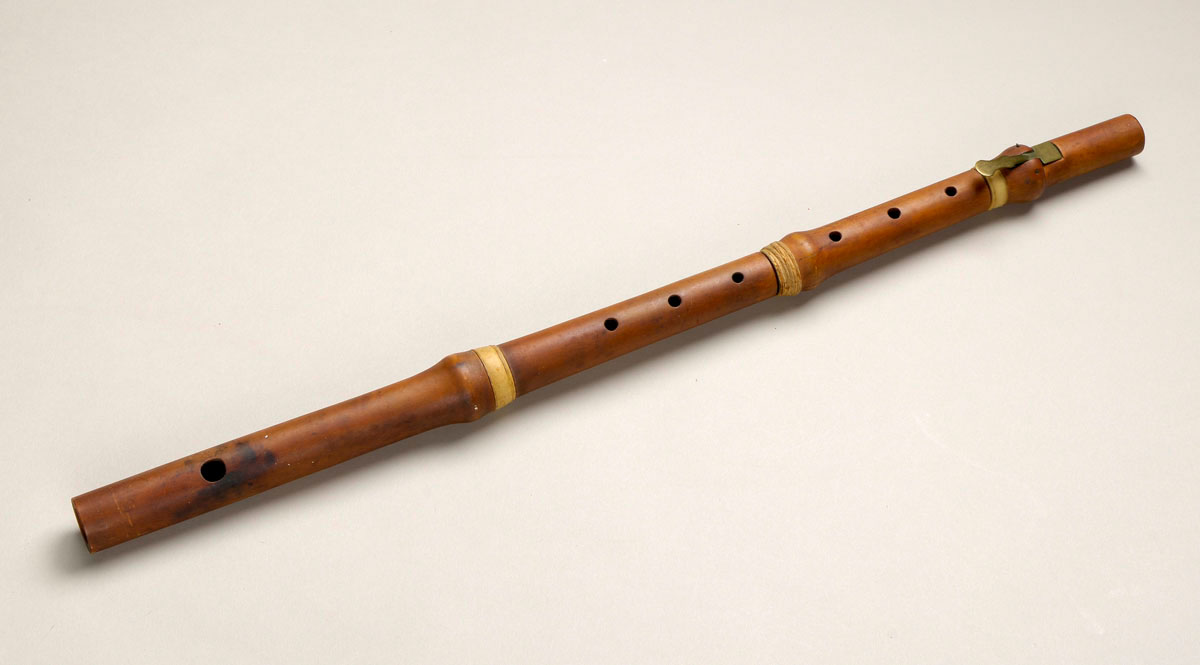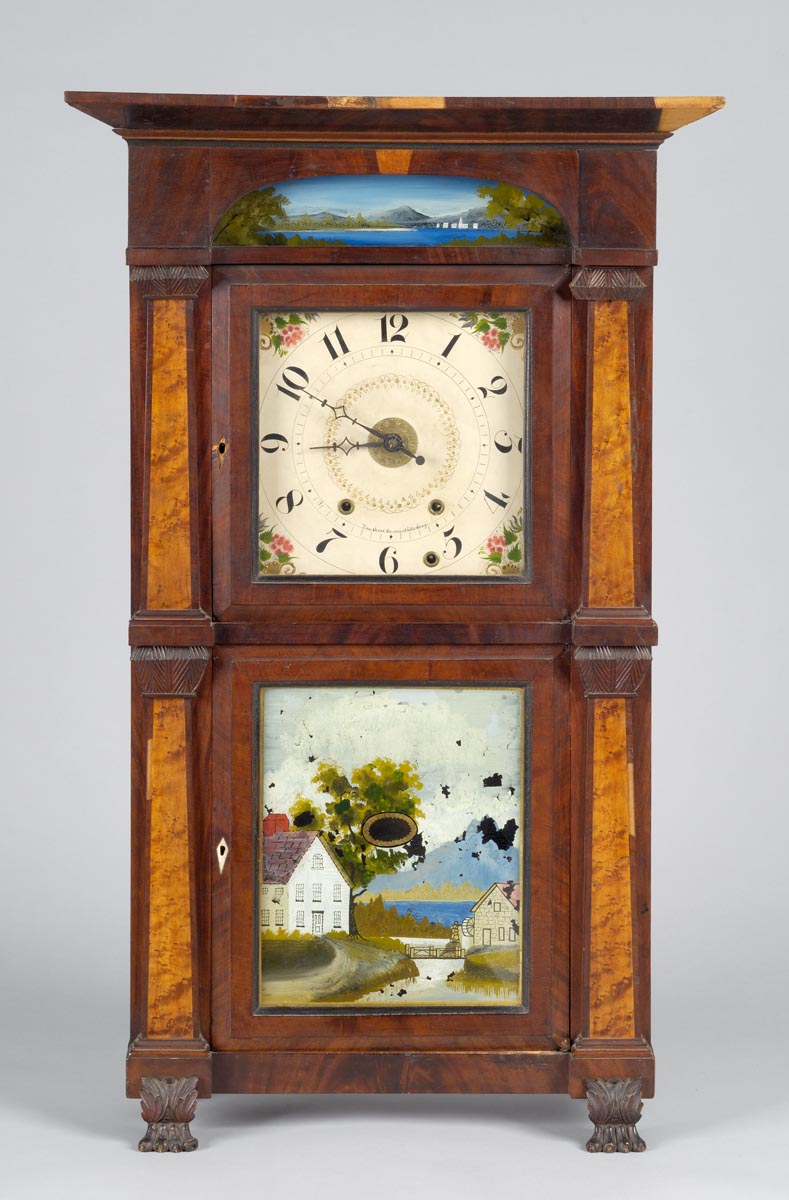Litchfield, Connecticut transformed within its first century from a scrappy frontier town to a bustling commercial center. The town, settled by citizens from Hartford and Windsor in 1721, attracted many residents who had marketable skills and a desire to establish a stable community. One of these early settlers was Asa Hopkins, grandfather and namesake of the well-known clock and musical instrument maker of the same name. Trained as a wood turner, Hopkins established himself in the Northfield section, located in the southeast corner of Litchfield. Four generations of Hopkins craftsmen would prosper there in related businesses, adapting to Litchfield’s changing post-Revolutionary War economy.

Born in Hartford in 1719, Asa Hopkins moved to Litchfield sometime around 1740 and married Abigail Harris a year later. Abigail was the only child of Litchfield settler Joseph Harris, who was famously killed by local Native Americans while clearing his land in 1723. As one of the original settlers of Litchfield, Harris owned a considerable amount of land. Abigail had inherited 700 acres from her father’s estate. To this, Asa added 300 acres in Northfield and built his homestead there. Asa and Abigail had three children: Asa, Harris, and Abigail.
Asa worked as both a turner and a farmer. His 1767 inventory listed livestock and farming equipment along with 14 turning tools, 3 turning lathes, a work bench, turning wheel, and assorted augers, chisels, and saws. His prodigious collection of tools and luxury items such as a clock, silver-hilted sword and belt, and three beds and bedsteads (the best one appraised at seven pounds), indicate Asa was successful.
His son Harris apprenticed as a turner under his father. In 1764, Harris married Margaret Peck, and they settled in Northfield. Harris’s homestead included a dwelling house, a carpentry shop, and a blacksmith shop. A surviving example of a clock reel stamped “HOPKINS” is attributed to Harris and is now part of a private collection.

Harris and Margaret had seven children. The two older sons, Joseph and William, continued the family tradition by training as turners and making spinning wheels and clock reels. Both men married and built homes in Northfield near their father’s house on present-day Campville Road. Several examples of their work survive today. The Litchfield Historical Society owns one great wheel and one clock reel stamped “JHOPKINS” and one great wheel and two clock reels stamped “WHOPKINS.” The turning patterns on the legs of the brothers’ products are very similar, demonstrating their shared training and possible collaboration in production.
Harris’s third and youngest son, born in 1779, was named Asa, like his grandfather. It is presumed that he also apprenticed under his father or older brothers, but Asa did not himself become a turner. By the late 18th century, spinning wheels, though still used in many homes, were no longer as vital to a household economy as they once had been. As early as the 1790s, consumers with sufficient means could outsource their cloth production, as evidenced by ads carried in Litchfield’s local newspaper The Weekly Monitor for weavers, dyers, and tailors. In addition, local merchants such as Julius Deming, Benjamin Tallmadge, and Elias Cowles imported goods from Europe and the East and West Indies. Making homespun cloth had gone out of style.
Asa may have seen in his brothers’ shops the decreased demand for spinning wheels and clock reels. He began manufacturing clock works [how are these different from reels?] around 1810. He was soon joined by his nephew, Joseph’s oldest son, Orange Hopkins. In 1816, the two craftsmen and fellow Northfield resident Lorain Bates entered into a partnership together; they did not, however, create a unifying name for their business. Asa and Orange continued to work in the same shop but maintained their individuality. The Litchfield Historical Society owns two tall case clocks marked “Orange Hopkins,” and the American Clock & Watch Museum in Bristol owns a tall case clock marked “Asa Hopkins.”
In 1825, the pair sold the clock shop, and Orange moved to Oneida County, New York. Asa remained in Northfield and in 1827 began building a new shop along the Naugatuck River. Two years later he entered into a formal partnership with Litchfield merchant Luke Lewis to begin manufacturing flutes and other woodwind instruments.

It is not clear why Asa switched from clock manufacturing to musical instruments. Possibly, faced with increasing competition from clocks makers in Thomaston, Bristol, and Plymouth, Asa sought a different market. His earlier decision to enter the clock business instead of turning spinning wheels indicates a business savvy and flexibility in a changing economic market. His training as a turner and years of creating wooden clock parts allowed him to easily transition into musical instrument making. Asa’s new business prospered and he remained in Northfield until 1836, when he sold his shop and moved to New Haven.
Asa was not the only Hopkins craftsman to diversify his training and jump into a new market. His nephew Edward Hopkins opened a shelf-clock factory on the Naugatuck River. It is believed that Edward apprenticed under his uncle Asa since he, too, chose to manufacture clocks. Like his uncle, Edward showed an understanding of the changing market and interest in profiting from the latest trends. Shelf clocks, also known as scroll and pillar clocks, were quickly surpassing tall case clocks in popularity. Smaller and less expensive, they appealed to middle-class consumers.
Edward went into business with his brother in-law Augustus Alfred. Manufacturing clocks under the name Hopkins & Alfred, the two men built a factory on the Harwinton side of the Naugatuck River in 1820 and remained in business until 1827. The factory manufactured both 30-hour and eight-day wooden clock movements.

Like his uncles, father, and grandfather, Edward used the Naugatuck River to power his factory. Manufacturing had changed, however: Though some work still needed to be done by hand, the majority of the work was done by machine. To increase productivity, Hopkins & Alfred acquired one engine lathe (or large lathe), three smaller turning lathes, and two pinion lathes.
For four generations, the Hopkins family prospered in the Northfield section of Litchfield. With a legacy of wood-working training, Asa, Orange, and Edward Hopkins—the best-known of the many Hopkins men working in the turning trades—took the skills imparted to them by their forefathers, evaluated the current economy, and seized opportunities to create new, more marketable products. The existing examples of their craftsmanship stand as a testament to their familial connections and ingenuity.
Article contributed by Julie Leone.